Today, I am reviewing a Macsax Queso 8* tenor saxophone mouthpiece (formerly the FJ IV model). I was contacted by Jeff Gjertsen at Macsax earlier this year and asked if I would be willing to review the brand new line of Macsax tenor saxophone mouthpieces. Of course, I was excited to try these beautiful mouthpieces out! Jeff was nice enough to send me a gold Soco model 8 tenor sax mouthpiece that I reviewed earlier this week as well as this silver rhodium Queso model 8* tenor saxophone mouthpiece that I am reviewing today.
Macsax Queso Tenor Saxophone Mouthpiece
First of all, the Macsax Queso tenor saxophone mouthpiece is beautiful to look at. Before I even received the mouthpieces in the mail, Jeff at Macsax sent me some photos of their new line of mouthpieces that just looked stunning. When I finally received the package and unwrapped the mouthpieces, I was just as impressed. These are beautifully crafted works of art.
The Macsax Queso tenor sax mouthpiece feels heavy in your hand as you hold it as it is made from a solid rod of brass. The silver rhodium plating looks thick and perfect with not a flaw or blemish anywhere in sight. The mouthpiece comes with a stylish blue marble bite plate that looks fantastic as well. On the top of the mouthpiece is engraved MACSAX in all capital letters and on the top side of the shank is engraved QUESO ATX (I assume ATX stands for Austin, Texas as that is where Macsax is based out of). On the underside of the shank is the tip opening of 8* and USA.
Macsax Queso Tenor Saxophone Mouthpiece
Here is the description of the Macsax Queso tenor saxophone mouthpiece from the Macsax website:
The MACSAX QUESO Tenor was created to be a mouthpiece for the contemporary tenor player that provides a powerful and projecting sound. Unlike many contemporary mouthpieces the QUESO does not sacrifice a fat and luscious core for projection and higher overtones. This mouthpiece has a well defined center at all dynamic levels that makes it perfect for any musical situation but is particularly suited for rock and contemporary music. The result is a mouthpiece that is easy to play with enough projection to allow you to be heard in any situation.
Each MACSAX QUESO is made from a solid rod of brass with a red marbled hard rubber bite plate which is CNC milled for a very consistent and high quality mouthpiece.
Macsax Queso Tenor Saxophone Mouthpiece
The tip, rails, table and baffle of the Queso tenor mouthpiece all look perfectly crafted. The window of the mouthpiece looks extra long and wide in comparison to my other tenor sax mouthpieces which I believe is a feature to let more of the reed vibrate and resonate while playing. The side rails and tip rail look thin, even and precise. The tip rail is close to the shape of my Rigotti Gold reeds although the outside curve of the tip rail looks to bend towards the side rail a little bit sooner than the shape of the Rigotti reeds but it is really close in shape.
The baffle is a little bit higher than the Soco model tenor mouthpiece and it has a gradual curve to it from the tip rail down to the edge of the chamber. I would say this is a medium height baffle. The baffle looks a tiny bit longer than the baffle in the Soco model mouthpiece as I compare them side by side.
The sidewalls are straight as they head back to the chamber as well. The chamber looks to be extra large in size to my eye just like the Soco chamber size. The bore of the mouthpiece comes right up to where the baffle ends and the extra long and wide window gives the impression of an extra large chamber area to me because that window takes out material from where the chamber is.
Macsax Queso Tenor Saxophone Mouthpiece
The Macsax Queso tenor sax mouthpiece is slightly thicker in diameter than a typical metal Otto Link tenor sax mouthpiece. Ligatures than fit an Otto Link metal mouthpiece will fit on the Macsax metal mouthpieces as well if you open the ligature up a bit. For example, my fabric Rovner ligature for metal tenor mouthpieces worked great on the Queso as did my Selmer 404 silver metal ligature if I opened it up a bit more. (Although, my Francois Louis Ultimate ligature for metal Otto Links would not fit on the Queso as it was too tight)
The bore of the Macsax Queso tenor sax mouthpiece was similar to the bore of a typical metal Otto Link mouthpiece as well and fit on my slightly worn down neck cork nicely.
Macsax Queso Tenor Saxophone Mouthpiece
The Macsax Queso tenor saxophone mouthpiece is one of the more free blowing saxophone mouthpieces I have reviewed. On a typical 8* tip opening (.115), I usually use a Rigotti Gold 2 1/2 light, medium or strong reeds. On the Queso tenor mouthpiece, I had to use slightly harder 3 strength reeds because of the free blowing quality of this mouthpiece. The 3 light reeds felt good but a bit soft for me. I did end up recording with the softer 3 Light reed just because I liked the added brightness the softer reed gave the tone. I also recorded a track with a Rigotti Gold 3 Strong reed as well that I really liked. (I actually thought it was a 3 Medium and realized it was a 3 Strong at the end when I was taking my reed off of the mouthpiece.)
The Queso tenor saxophone mouthpiece comes with a Rovner Versa ligature but I didn’t really like the affect this ligature had. It actually made the reeds even more free blowing. For these sound clips, I used my Selmer 404 silver metal ligature that fits on the Macsax Queso tenor mouthpiece perfectly.
On the clips at the bottom of the review, I tried to show a variety of different sounds that the mouthpiece could get when I was playing it. As is my habit lately, I have added an additional clips with reverb as well. I feel this is important because sometimes listener’s get fooled by a “dry” recording of a sax mouthpiece. They think it is too bright, or thin or maybe even dead sounding but that is only because it is recorded in a “dry” recording environment which is what you are supposed to do for the best recording. Trust me, a mouthpiece that is a little bright in a dry setting can be unbelievable in a big room with a natural reverb or through a mic with a little bit of added reverb. Honestly, as a gigging musician my choice of mouthpieces have always been the ones who have that brightness and punch that comes alive when on a gig. That’s my preference anyways………
Macsax Queso Tenor Saxophone Mouthpiece
The Macsax Queso tenor saxophone mouthpiece played great for me with Rigotti Gold 3 light, medium and strong reeds. The tone definitely leans to the brighter side of a tenor tone at loud volumes but at softer volumes it sounds more warm and lush to me. The tone is thick, full and round while having a strong core to it. The more air I pushed through the Queso tenor sax mouthpiece, the more focused the tone seemed to get just like when I reviewed the Macsax Soco tenor mouthpiece. The difference is that while the Soco seemed to retain it’s round warmth and control, the Queso is a bit brighter and edgier sounding at louder volumes. I also got the impression that while the Soco was more refined and controlled the Queso can be more wild. If I was playing in a loud R&B or Rock gig I would definitely go with the Queso mouthpiece for those types of gigs.
The tone was even and smooth throughout the range of the horn. The intonation was actually really good. Better than usual actually. I think the extra large chamber is a good fit on my Selmer SBA (Super Balanced Action) tenor sax as many of the notes that tend to be sharp were right on the 0 of the tuner when I checked them which is pretty rare without me having to adjust to get them there.
The low notes sound thick, fat and lush to me and it was easy to play the notes in the lower range of the horn and to subtone. The altissimo register was also very clear and super easy to produce. The altissmo register was so easy to play that I think I spent a lot more time playing up there than I usually do on my sound clips so keep that in mind when you listen to the clips.
Just to clarify, when I write that a sax mouthpiece is free blowing, what I mean is that in comparison to other mouthpieces with more resistance the Queso mouthpiece gets to the top volume a lot easier and faster with less air. My impression is that if I blow the amount of air that gives me a 5 on the volume scale of a mouthpiece with resistance, that same amount of air might give me a 7 or 8 in volume on the Queso tenor sax mouthpiece. This is neither good nor bad in my mind but just feels different if you are use to blowing with more resistance and is just something you get used to as you play the mouthpiece.
Free blowing also means that I find that harder reeds work better on the mouthpiece than I might typically use on a mouthpiece with more resistance.
I did feel like the Queso did have more volume potential for me than the Macsax Soco model mouthpiece could produce. The Soco could bring me to a solid 9 for volume but the Queso seemed like I could push it to an 11 or 12 if I needed to. Especially with that harder Rigotti Gold 3 Strong reed. It felt like there was a lot more potential for volume with the Queso tenor saxophone mouthpiece.
Macsax Queso Tenor Saxophone Mouthpiece
In my opinion, the Macsax Queso tenor saxophone mouthpiece is a great mouthpiece for those of you looking for a sax mouthpiece with a focused thick tone that also has a nice brightness to it. This would be a great all round tenor mouthpiece for those of you looking for a mouthpiece that can handle multiple styles of music. At soft volumes it is thick and full sounding but at louder volume it gets brighter and more focused to cut through those loud band gigs. I think Jeff Gjertsen and Greg Wilson at Macsax mouthpieces have done a great job with this new Queso tenor saxophone mouthpiece. It looks fabulous and plays great!
Macsax has recently revamped their website at Macsax, so make sure you check it out if you are interested in the Macsax Queso tenor saxophone mouthpiece. Macsax also has a the Soco model tenor saxophone mouthpiece that has a lower baffle than the Queso model being reviewed today if you are interested in something with a darker, warmer tone.
If you try a Macsax Queso tenor saxophone mouthpiece or have any thought or comments on this review, I would love to hear what you think in the comments below. Thanks, Steve
Macsax Queso Tenor Saxophone Mouthpiece-Rigotti Gold 3 Light Reed-No Effects
Same Clip As Above with Reverb Added
Macsax Queso Tenor Saxophone Mouthpiece-Rigotti Gold 3 Strong Reed-No Effects
*I say I am using a 3 medium reed in the clip but this is a mistake, it is a 3 strong reed
Same Clip As Above with Reverb Added
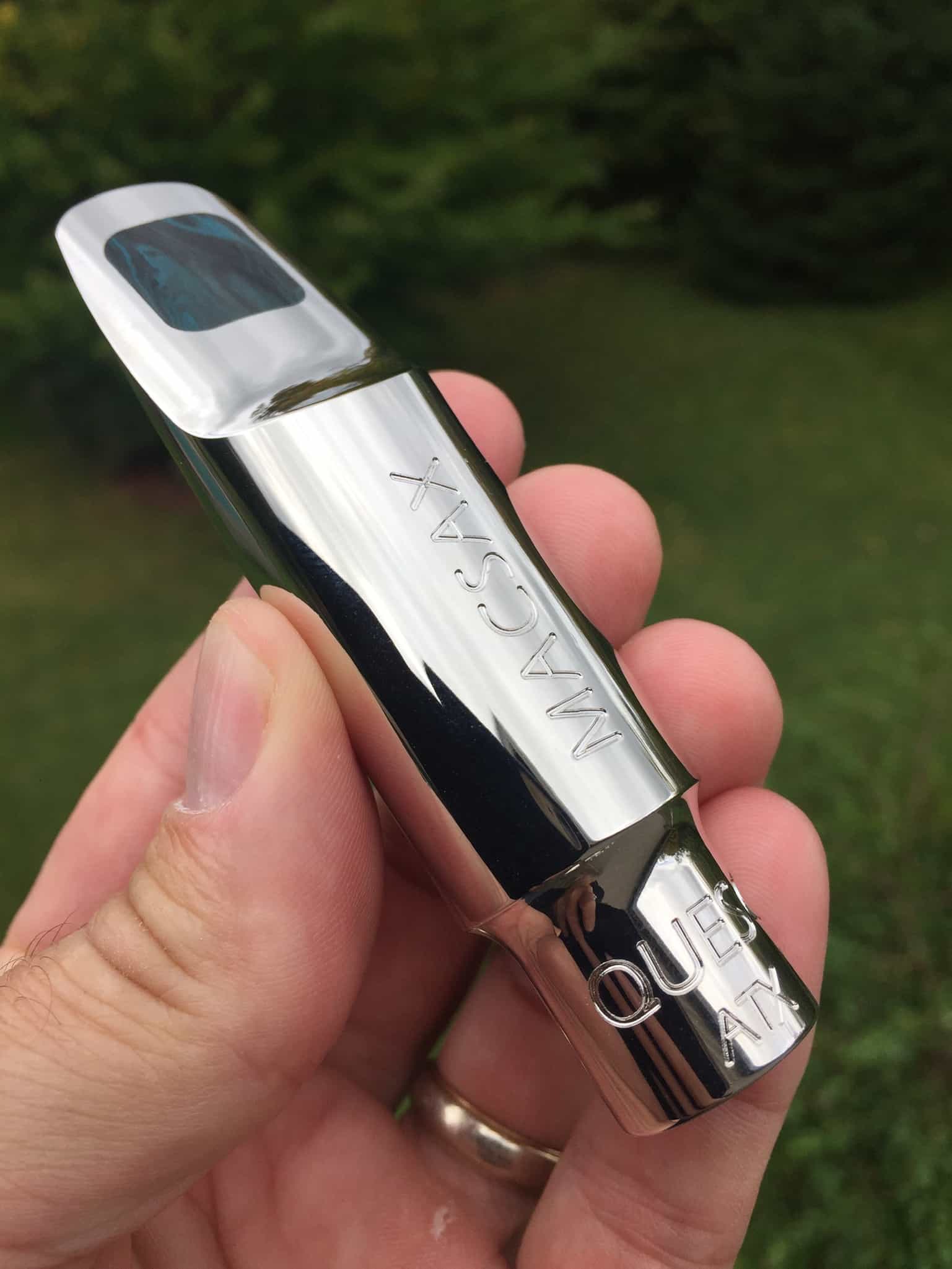

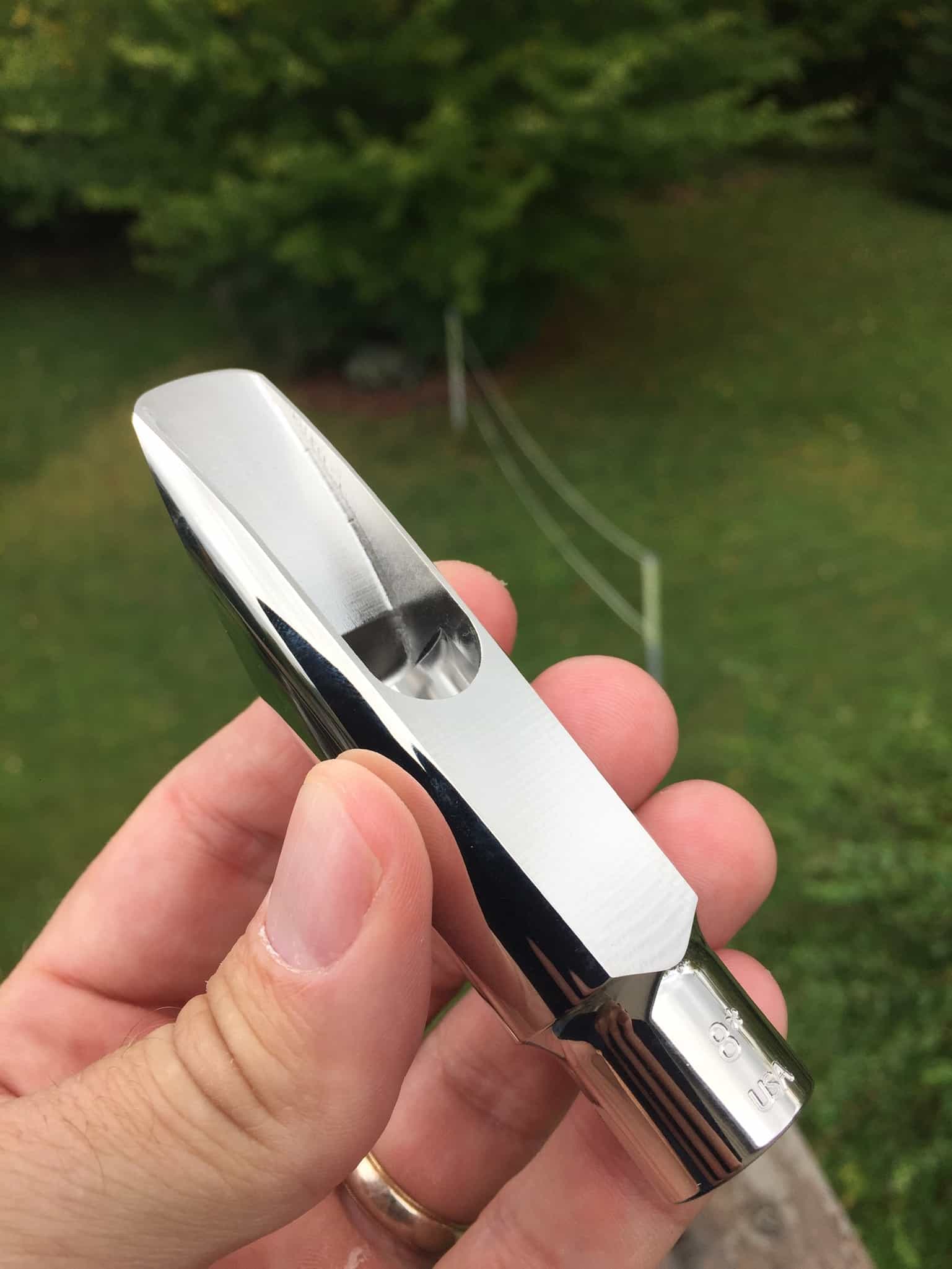
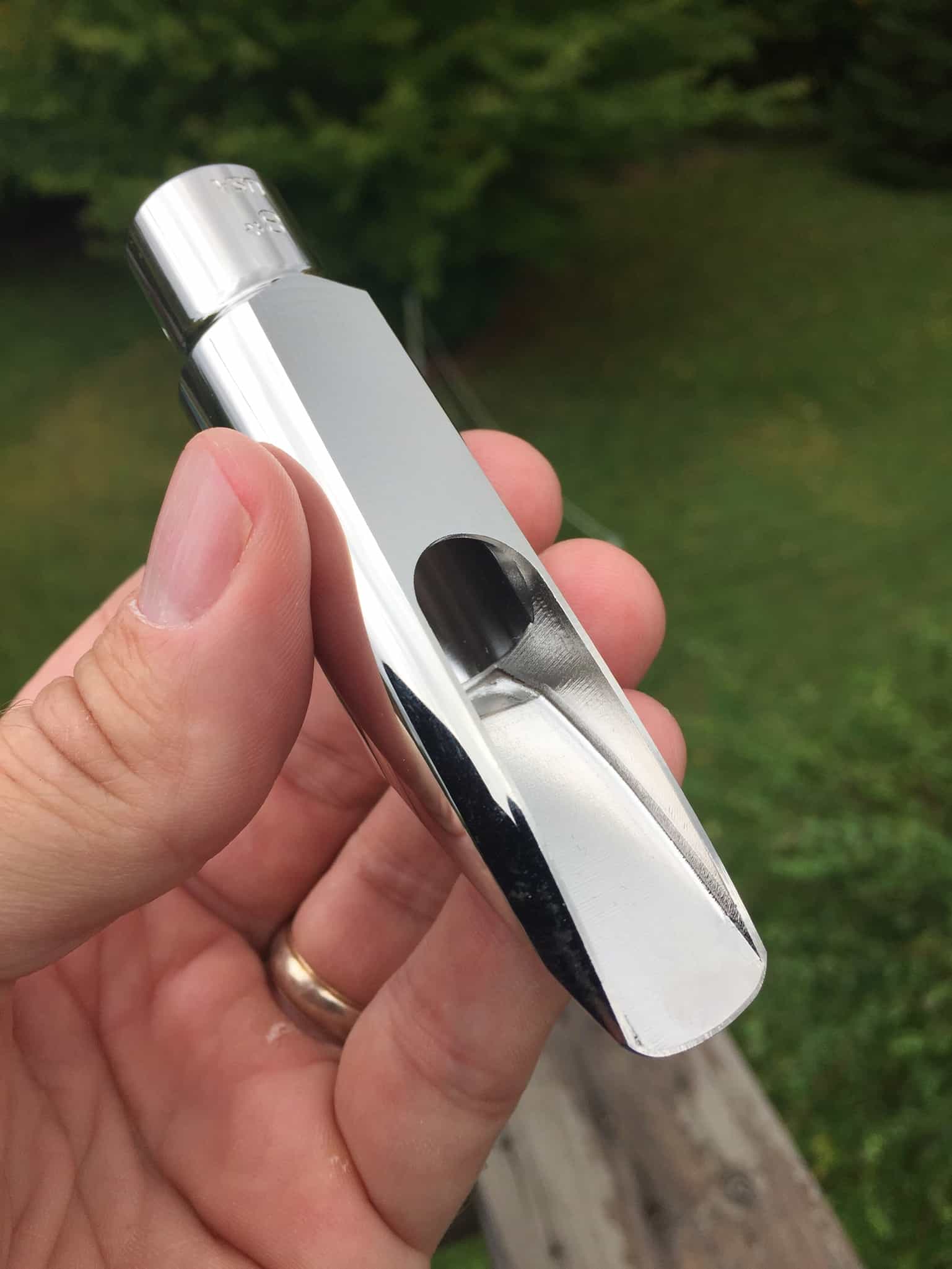
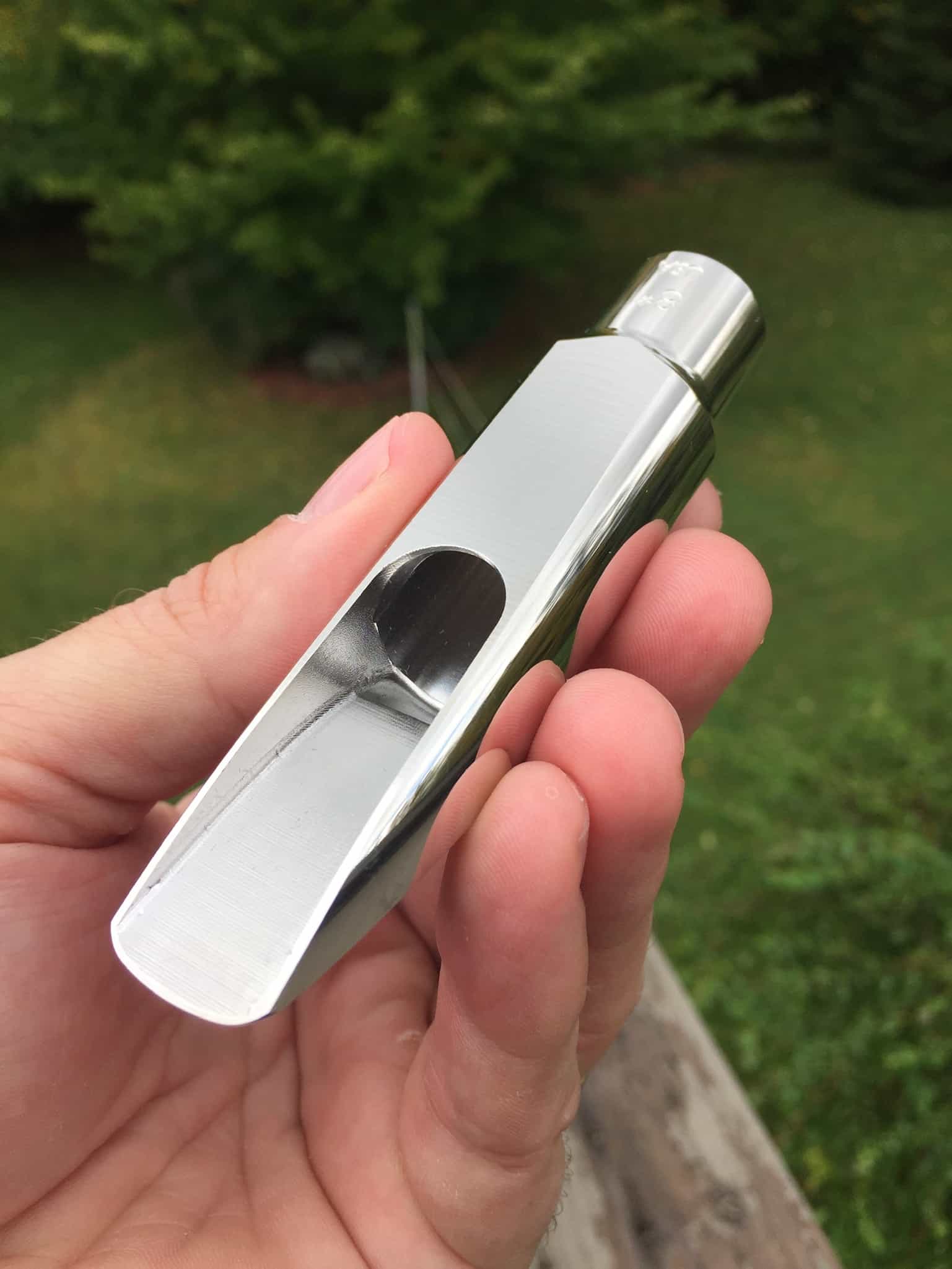
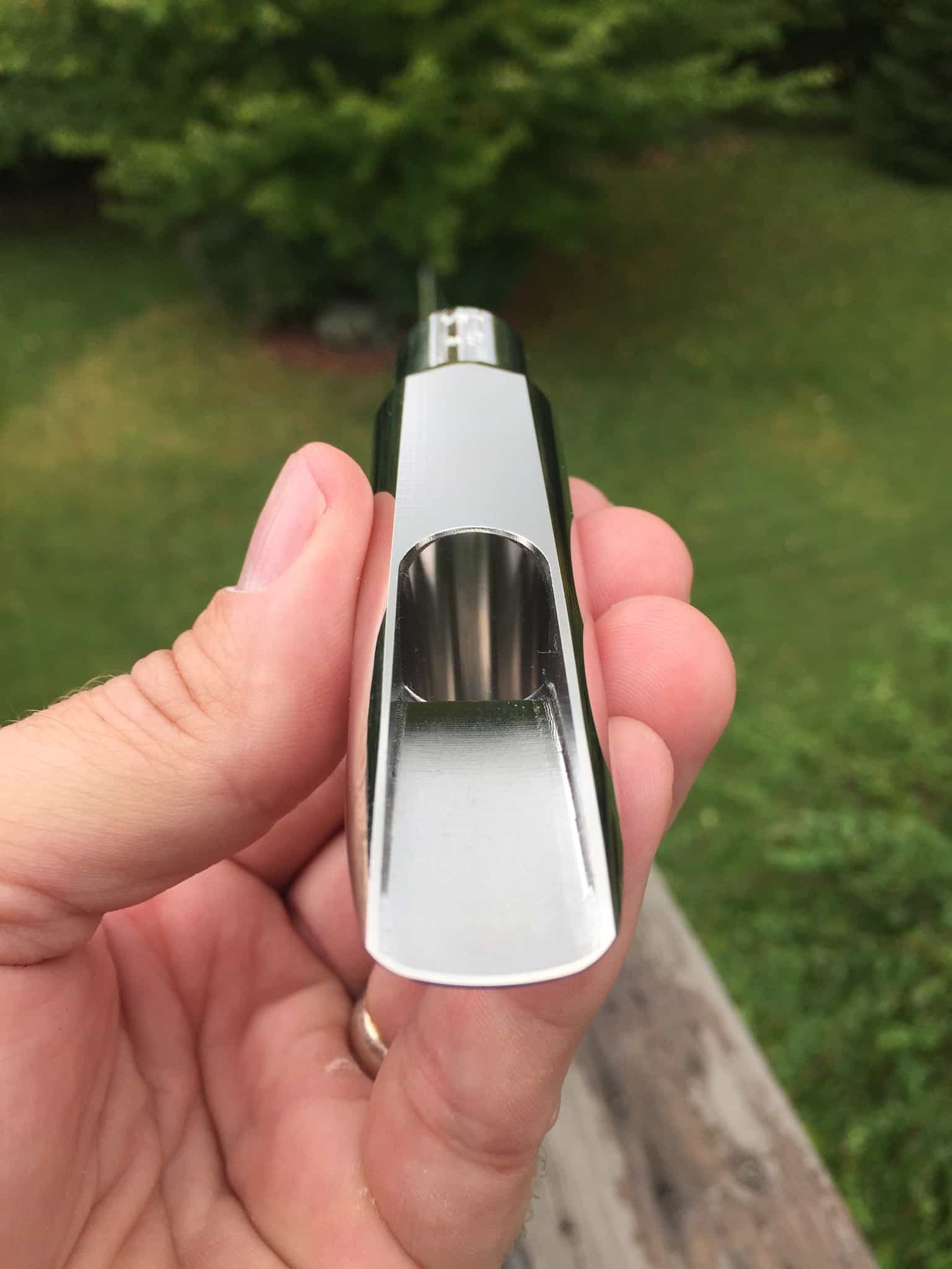



Steve,
This clip of the Queso mouthpiece is probably one of your best sounding Tenor recordings in my opinion. Not only does it sound fantastic throughout the range of the horn but you can tell that you feel very comfortable on it. This mouthpiece sounds extremely flexible which I don’t seem to hear on other recent recordings you have done on other name brand mouthpieces. Keep up the great work.
Thanks Charlie! I appreciate that. It is definitely very comfortable in the altissimo range for me. I was trying some lines I don’t even usually play just because it seemed so much easier up there. Steve
Which mouthpiece is easier to blow queso or the moam. I find the Moam takes a lot of air.
The Queso is definitely more free blowing. What tip opening did you get of the Moam? Steve
Thanks for the excellent review. I play the older FJ IV mouthpiece, and wonder what the differences are between it and the newer one? Chamber, baffle, and tip seem to be similar if not identical between the two.
Bob, I’m not sure. I never reviewed the older FJ IV. It might just be the outer external design changes. The outside of it does look a lot better to me than the old design that is for sure. Maybe someone from Macsax will chime in and answer your question about the internal aspects. Steve
Yeah, this is nice sounding piece for sure. I can hear that it does help the intonation from running out on the SBA. Really nice piece for playing out in today’s market. Any touring player is going to like that 115 tip opening. It demands attention but isn’t pealing any paint nor is it in one’s face either. Should blend well in a horn band setting. Thanks for the demo.
Thanks for the great review Steve!
Bob, overall the internal structure of the mouthpiece is similar to the old FJ IV however we have made some modifications based on the feedback we received over the years. We did make some minor modifications on the baffle curvature on the Queso to get the sound we were looking for. We also made some changes to the facing curve to make it easier to play at softer volumes. Finally, the tip and side rails are a bit fatter so the mouthpiece is less prone to chirping, pinching your lip, and more forgiving when it comes to reed placement since the FJIV (and FJIII) tended to be difficult to place reeds properly on dark stages. A lot of little tweaks, but together we feel they add up to a big improvement.
Thanks for the input JeffatMACSAX. Your new Queso looks to be another winner from you guys at Macsax.